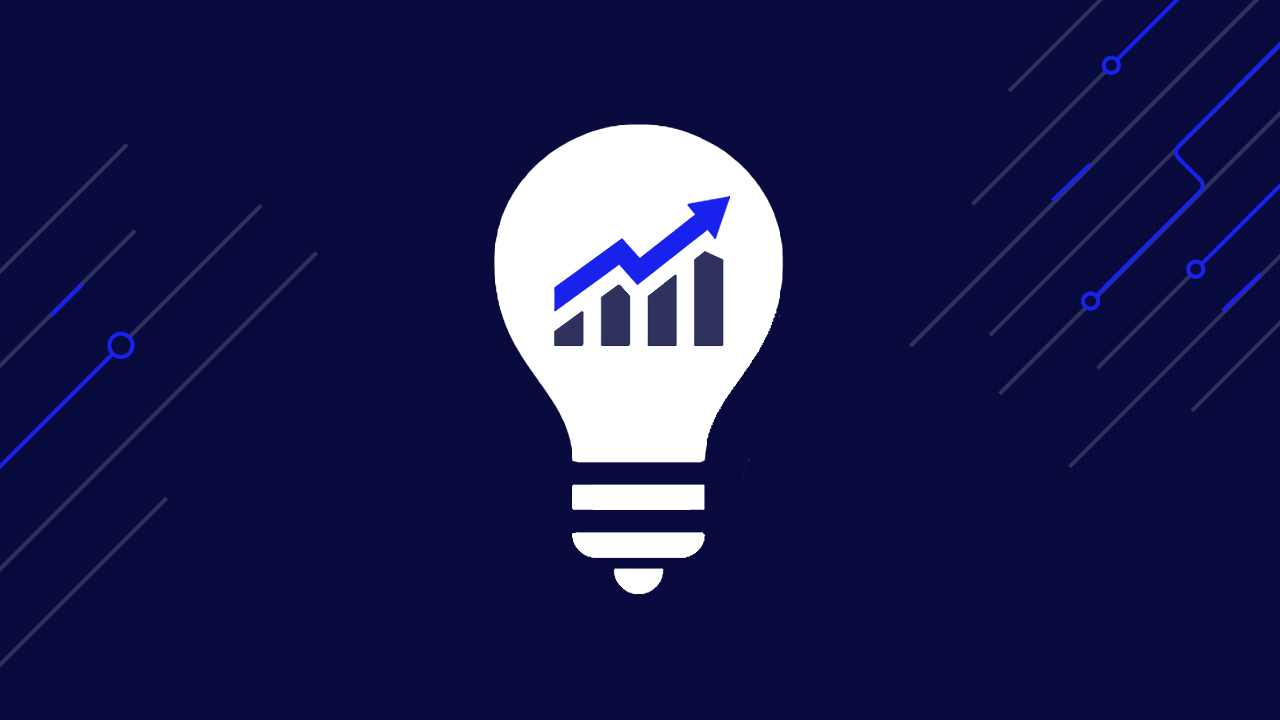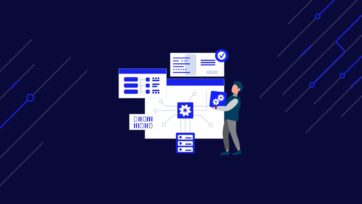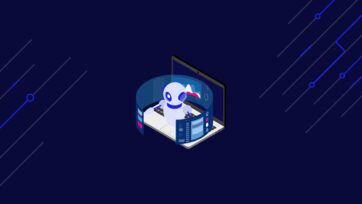Attracting the right consumers and converting them into paying customers has always required a balance of creativity, industry knowledge, and a clear understanding of consumer needs.
The first one (creativity) could be developed over time and greatly benefit from trial and error. However, when it comes to industry knowledge and consumer needs, most business owners and marketers make assumptions based on their own experiences and conversations.
Although betting away your resources can pay off, there are a lot of unnecessary risks involved that can easily result in money loss, unsuccessful campaigns, or harming your brand. So, if you’re still making blind or guesstimated marketing decisions, then it’s time to learn how extracting data can inform your marketing strategy.
Why Marketing Teams Need Data
This year (2022), around 2.5 quintillion bytes of data is being created daily, most of which is publicly available online. Collecting and analyzing data at scale will allow you to make decisions based on your customers’ preferences, competitors’ strategies, pricing trends, product-demand trends, and much more, instead of intuition, increasing the chances of marketing campaign success.
In addition, a data-driven marketing approach can make your campaign more cost-effective, as you’ll be allocating resources to the channels with the highest success rate and cutting on expensive campaigns built upon guesswork. Companies using rich data have a clear advantage over those without the knowledge to approach the market with the right strategy. However, there’s a challenge we need to address:
How do you gather the necessary data legally?
How Marketers Can Collect Relevant Data at Scale
In theory, you can collect data manually by adding information into spreadsheets. It’s as simple as, for example, gathering tweets into a sheet and filling each column with information. But understanding why this process would be inefficient doesn’t take too much effort.
Marketers need to think about what information they need according to what they want (for example, data to plan a product launch or to create a content calendar) and then choose the best technique to scrape that data at scale. Depending on the nature of the data and where you’re planning to pull it from, you’ll need to adapt to the most appropriate solution:
- Surveys and polls are a great way to gather data from current customers and online audiences and can provide exciting feedback to improve your campaigns, product lines, or new trends.
- Using data vendors is a fast way to gather a lot of information without needing to do the gathering yourself. Many companies collect vast amounts of data, categorize it and create useful formats for others to buy and use. The most common form of data is contact lists. However, it lacks personalization, and finding a data source with every value you’re looking for is almost impossible.
- Feedback and registration forms are great tools to gather information from audiences already interacting with your brand.
The problem with all these data collection strategies is that you’ll need to deal with several limitations depending on your use. For example, even though surveys and polls are fine choices, participation rates are usually low without incentives, and you’ll need to invest in distribution to put them in front of your ideal audience.
That said, there’s a more direct choice: marketers can use web scraping to gather data fast and on a personalized level. This way, you can collect the values you need to make better decisions.
What is Web Scraping?
Web scraping is the process of extracting publicly available data from the web using advanced tools – known as web scrapers – for repurposing or analysis. You can use it to automate research, feed machine learning models to draw insights quickly, build data visualizations to tell better stories to stakeholders and consumers, etc.
A web scraper can infinitely scrape more data than humans could by hand, so it can help marketing teams lower man-hours on research projects and invest it in execution. And thanks to affordable solutions like ScraperAPI, you only need some basic programming knowledge to pull data efficiently.
7 Ways Marketers Can Use Web Scraping to Make Better Decisions
There are countless applications for web scraping in marketing, but today we’re going to focus on the seven most common use cases:
1. Scraping Social Media Mentions, Hashtags, and Trends
Social media is a gold mine of data; it’s where people gather to talk about anything and everything. Most platforms do a great job of keeping historical data organized—and although they do it so people can search for information quickly and easily, it also helps us to scrape targeted information. Here are four main kinds of data you’ll want to collect from social media:
Brand Mentions
Your branding is one of the most important marketing tools you have, so make sure you understand how people perceive your brand. Listen to the conversations happening around it on social platforms to inspire messaging, create campaigns to better your image, and build a strong relationship with your target audience by participating.
To take it one step further, you can use sentiment analysis to spot angry comments involving your brand worth responding to.
Hashtags
For platforms like Twitter, hashtags are the bread and butter of an organization. By scraping data on the hashtags your ideal customer uses, you can stay on top of critical conversations, identify up-and-coming influencers to collaborate with, identify relevant hashtags to create content for, and increase engagement and brand awareness.
Trends
Scraping historical data will allow your team to identify trends before they go viral, understand how current trends work to find opportunities for your brand to capitalize on, and help you with your social strategy.
Monitoring trending topics on social media and setting an alert when specific topics are going viral can help you join the trend when it’s still fresh.
Still, there is so much you can do with social media scraping. For example, you can scrape user data to create profiles you can target with highly personalized ads and promotions, or even build data-based profiles to inform your next campaign.
If you don’t know where to start, here’s an easy-to-follow Twitter data scraping tutorial. It doesn’t require any prior programming knowledge, and you’ll find an easy-to-customize script in the end.
2. Competitor Analysis and Monitoring
You can use a similar approach as above, but instead of keeping an eye on your brand, you would focus on your competitors’ brands.
Competitors also create a lot of helpful information online. Scraping product pricing, product pages, and reviews on their site can help you build a campaign to differentiate your brand from theirs and improve upon what they have already created.
Another approach is scraping search engines and social media platforms using their names to discover what consumers say about their brands. Once you have this data, you can find common complaints you can exploit to convert unhappy customers into your brand and create better-competing campaigns by emphasizing their weaknesses and how you solve them.
Marketing teams can also scrape website changes in real time and alert you when new products or promotions pop up. This can win you more time to react to their strategies and counterattack.
3. Scraping Forum Websites Like Reddit and Quora
In “May 2022, approximately 1.7 billion visits were measured by the online forum [Reddit],” according to Statista. With many users creating communities with Subreddits, talking about a wide range of topics, or sharing their thoughts and ideas publicly, scraping Reddit can lead to a massive amount of relevant data.
This data can later be used to keep track of consumer opinions around relevant topics to your business, find conversations and analyze their sentiment about your brand, competitors, and products, and even find new product opportunities to launch based on current trends within the Subreddits.
A great beginner project to start scraping Reddit is setting alerts when new posts are created using a particular set of keywords. Joining early on in these conversations can help you build a stronger connection with your target audience.
Of course, Reddit is not the only platform. You could also scrape Quora and set alerts to new questions you would like to answer. This helps build brand awareness, generate organic traffic and build a reputation as a subject matter expert in your niche.
Plus, scraping new questions around your industry can help you find uncovered topics worth creating content on your site and social media.
4. Generating Content Ideas and Scaling Your SEO Strategy
Content is the pillar stone of organic channels like search engine optimization (SEO), but it’s hard to generate relevant content ideas from scratch.
When building a content strategy, scraping your competitors’ blogs to collect titles, H1s and H2s, meta descriptions, category pages, etc., can help you build a database of detailed content ideas. This can also be an excellent way to find uncovered topics you can target first to gain initial traction while creating your competing pages.
For enterprise websites, you’ll also want to scrape search results to find keywords your competitors are not ranking for, monitor your competitors’ rankings, and spot competitors’ ads on keywords you should be advertising on.
Here are a few ideas for scraping Google search result pages for SEO:
- Scrape the first page for every variation of your target keyword to understand what’s working across the board, understand search intent and optimize your own pages to outrank the competition.
- Set alerts on relevant keywords when competitors break into page 1 and the first three spots. If your competitors are investing resources into those keywords, it might indicate a positive ROI on them.
- Scrape keywords like “[competitor] reviews,” “[competitor] alternatives,” and other competitor-related keywords to find what is being said about your competitors, the state of the industry, and potential content opportunities to capitalize on your findings.
Google is a vast source of information and websites, so keep your mind open to the possibilities.
5. Scrape Contact Data from Public Directories
As long as the data is publicly available, it can legally be scraped.
And that goes for contact information as well.
Generating leads is a time and resource-intensive task for any marketing team. To give your team a head start, you can scrape directories full of contact information like names, email addresses, titles, etc., to build a list of leads your sales team can contact while your organic channels grow.
For example, if your campaigns target lawyers and law firms, you can scrape law directories and build a database of lawyers’ contact information. To push the project further, you can filter out any lawyer profile without email and then use email automation tools to use the scraped data to automate outreach email campaigns, saving your team countless hours in the process.
6. Anti-Counterfeiting for eCommerce Products
Counterfeiting is “a fraudulent imitation (a forgery) of a trusted brand and product”. Marketing teams and businesses can stay on top of any attempt from fraudulent third parties trying to profit from their brands and products and stop them from harming their reputation by consistently scraping the web (images, keywords, unlinked mentions, etc.).
Although it’s not marketing per se, counterfeiting can ruin product launches, harm your bottom line and become a marketing nightmare in the future if your brand gets associated with low-quality products.
7. Scrape Search Trends to Invest Resources More Efficiently
Every product and service your business provides needs marketing efforts to get your offer in front of the right people. However, no amount of marketing will make you sell a product or service people are just not interested in.
By monitoring the popularity of your offering-related keywords, you can forecast the growth or decrease in demand for specific offerings. You can use this information to allocate your marketing budget to those offerings with a higher ROI potential, making your business more profitable in the long run.
Another benefit of scraping search trends over an extended period is that you can identify common trends throughout the year and determine the best moments for new product launches and marketing campaigns for your catalog.
Here’s a step-by-step guide to scrape Google trends with a ready-to-use code snippet. If you follow the guide, you’ll be scraping trends data at scale in just a few minutes.
8. Create a Go-to-Market Strategy for New Business Location [Bonus]
Suppose you’re thinking of opening a new branch for your business. In that case, it means that you’ve successfully grown your company, built a consistent customer base, and figured out how to position yourself in your current market. However, that could not be the case for other locations.
Every location has its own way of doing things, and if you’re trying to enter a new market without adapting your messaging to its culture, you will probably fail. That’s what happened with the story of Taco Bell in Mexico.
Marketing teams can set their web scrapers to extract information as if they were in a particular country or geographical area, so platforms like search engines and social media will display data as if your web scraper were a local user.
This is an excellent window to the culture of your new target audience and a step forward in the right direction to understand what their needs are, what language would work best for them and what’s the competitive landscape in that area.
Ready to Get Started with Web Scraping?
As data becomes increasingly important, marketers will need to learn how to gather and analyze massive amounts of data to keep their businesses competitive. Sign up with ScraperAPI and explore the endless possibilities of web scraping with 5000 free API credits.
View our features and pricing in detail here.
You can improve your efforts by following some of our beginner series tutorials:
- Web Scraping Basics (Free PDF Guide)
- Web Scraping Software Reviews and Tips To Help You Scrape The Internet
- How to Web Scrape With JavaScript & Node.js
- Web Scraping Guide Using Python & Beautiful Soup
- The Only CSS Selectors Cheat Sheet You Need for Web Scraping
We hope you enjoyed this article and that your mind is now open to all the possibilities web scraping offers to your teams and how it can help you empower your marketing decisions by eliminating guesswork from the equations.
Until next time, happy scraping!



